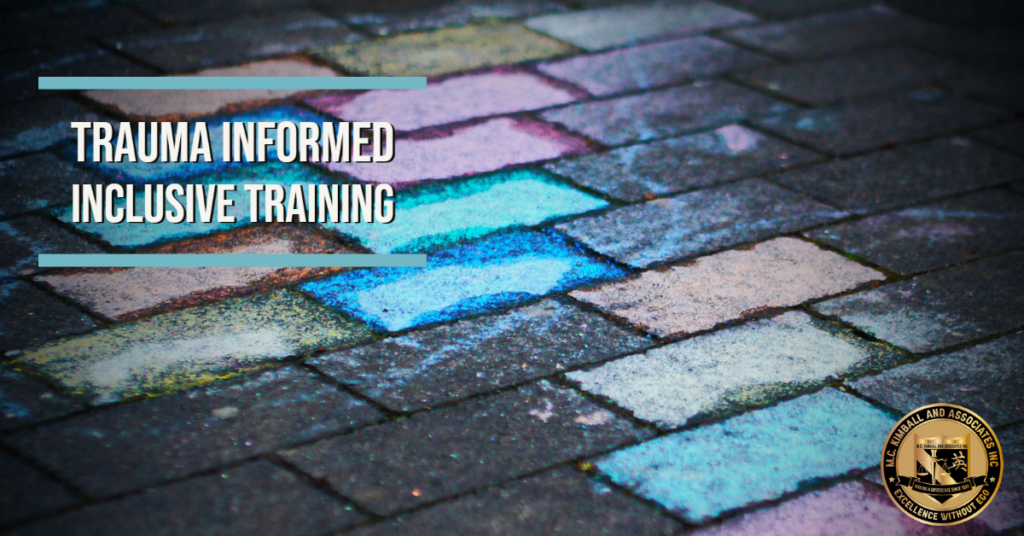
The safety and well-being of school-aged children are paramount, especially in times of crisis. Active crisis situations, such as natural disasters, emergencies, or acts of violence, can deeply impact children, potentially leading to long-term trauma as can the preparatory training for these events.
To address these challenges, it is crucial to implement trauma-informed practices that prioritize the emotional and psychological needs of children.
In addition, ensuring inclusivity in safety training programs is essential to cater to the diverse needs of all children. By adopting these approaches, we can create a supportive environment that empowers children and equips them with the necessary skills to respond effectively in times of crisis.
Understanding Trauma-Informed Practices:
Trauma-informed practices recognize the profound impact trauma can have on an individual’s mental, emotional, and physical well-being. Applying this approach in safety training acknowledges that children may have experienced trauma in the past or may be experiencing ongoing trauma. Such trauma can hinder their ability to respond appropriately during emergencies. By incorporating trauma-informed practices, educators and trainers can create safe, nurturing spaces that promote healing, resilience, and recovery.
The Importance of Inclusivity:
Inclusivity in safety training programs ensures that all children, regardless of their backgrounds, abilities, or identities, receive the support they need to navigate crisis situations. It is crucial to consider factors such as cultural diversity, disabilities, language barriers, and socio-economic disparities when designing and delivering safety training. By incorporating inclusive strategies, educators can ensure that no child is left behind and that everyone feels valued and empowered to participate fully in crisis response activities.
Empowering Children:
Trauma-informed, inclusive safety training empowers children by providing them with the knowledge, skills, and abilities necessary to respond effectively during emergencies. These programs emphasize the importance of preparedness, communication, and self-care. Children learn about emergency procedures, recognize warning signs, develop problem-solving abilities, and practice self-regulation techniques. By empowering children, we instill a sense of agency and self-confidence, enabling them to make informed decisions and take appropriate actions to ensure their safety and the safety of others.
Building Resilience:
Trauma-informed, inclusive safety training not only equips children with practical skills but also nurtures their resilience. By creating a supportive environment that acknowledges their experiences, concerns, and fears, we can help children build emotional strength and adaptability. Encouraging open dialogue, active listening, and empathy within the training setting cultivates a sense of belonging and trust. This, in turn, fosters a resilient mindset that allows children to face and overcome challenging situations more effectively.
Collaboration and Community Engagement:
To maximize the impact of trauma-informed, inclusive safety training, it is essential to involve various stakeholders, including educators, parents, community members, and mental health professionals. Collaboration between these groups ensures a comprehensive approach to safety training, incorporating diverse perspectives and expertise. Community engagement enhances the continuity of support beyond the training sessions, creating a network of individuals committed to the well-being of children during crises.
Conclusion:
Trauma-informed, inclusive safety training for school-aged children in active crisis response techniques is of paramount importance in today’s world. By prioritizing the emotional well-being of children, addressing their individual needs, and empowering them with knowledge, skills, and abilities we can create safer and more resilient communities. Adopting these practices fosters a culture of care, support, and inclusivity, ensuring that every child is equipped to navigate crisis situations with confidence and resilience. Together, we can make a significant difference in securing the well-being of our children in times of uncertainty.
About the Author: Michael C. Kimball has over 30 years of experience as a sworn law enforcement officer in the State of California. Michael helped to co-develop the Monterey Peninsula Regional S.W.A.T. team and was both a Tactical Commander and later the Logistics Commander for the Team. Michael Co-Authored one of the State of California’s First Active Shooter Protocols back in the early 1990s and again post-Columbine.
In 1989 Michael Founded his company and in 2000 his company formally became M.C. Kimball and Associates, LLC. Michael is a Nationally Certified Instructor in Option Based Training to Mitigate Active Killers and has traveled around the nation with Homeland Security since 2010 conducting train-the-trainer for School Districts, Hospitals, Businesses, Churches, and the Hospitality Industry both in English and Spanish. In 2021 Michael and his executive team of experts developed the We’ve Got Your Back ™ Program (A Team Approach to School Safety) a trauma-informed, inclusive, safety training program for students.

Recent Comments